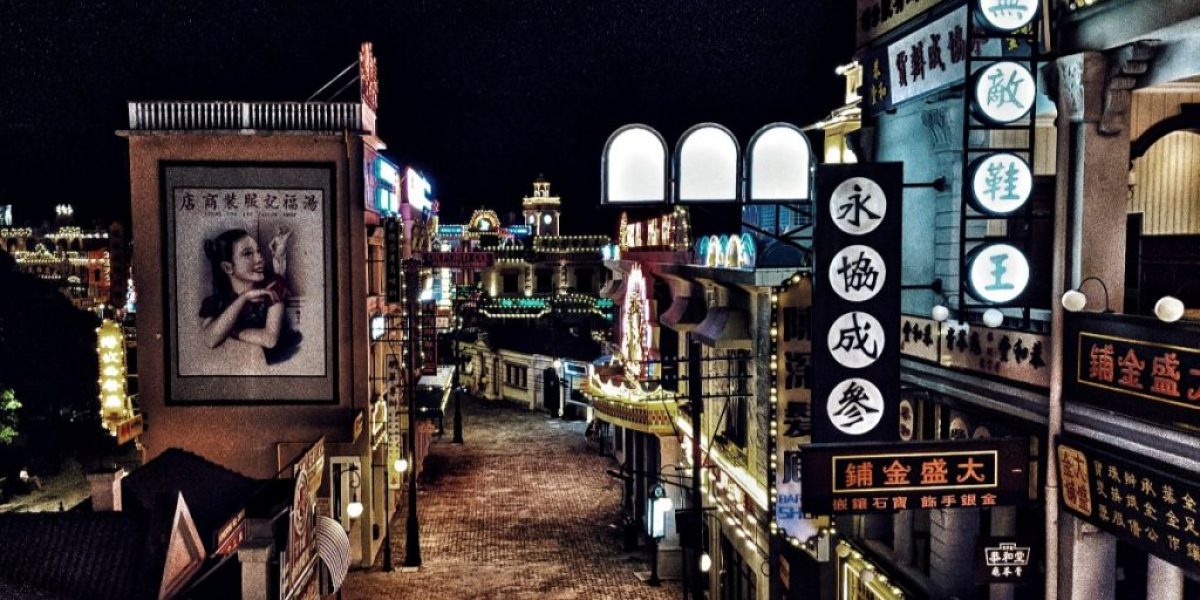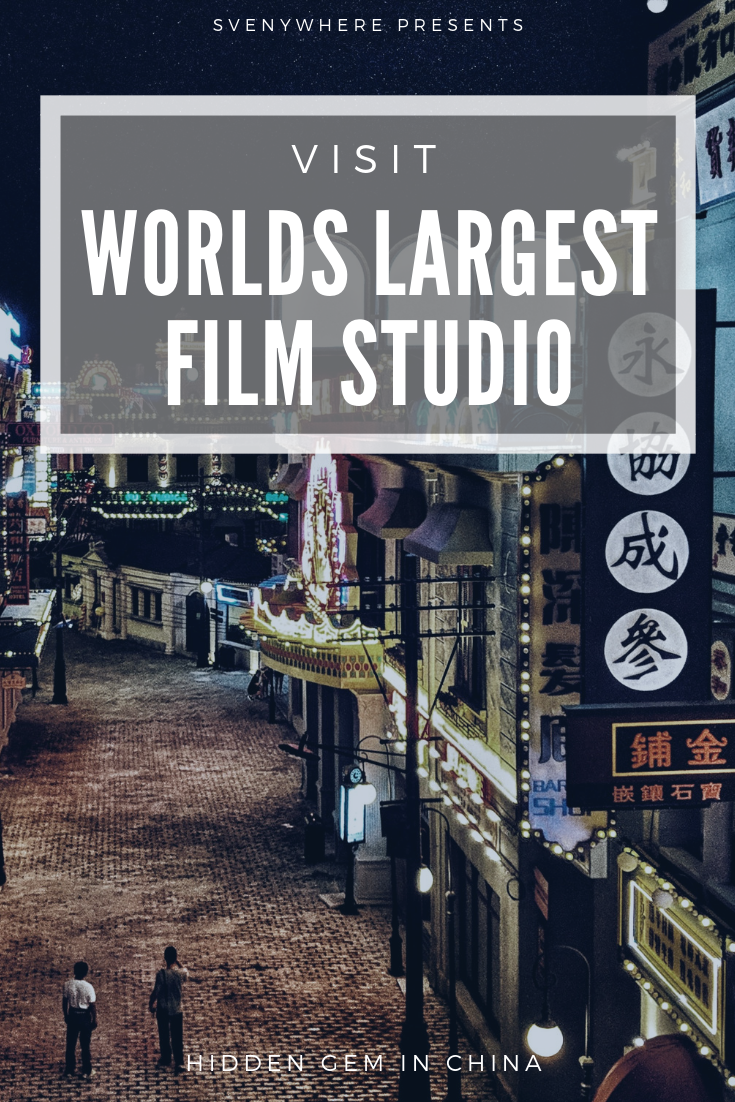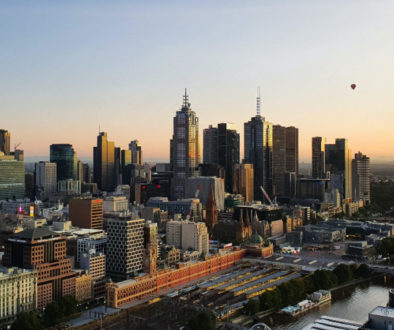Maybe you think that the world largest film studios are somewhere in America. Maybe in Hollywood if you need to make a guess. However, the biggest film studios are in China. Hengdian to be precise. And the good thing is, is that it is open to visitors. So, everyone is able to enjoy the biggest film sets in the world.
You are for example able to visit Forbidden City on a 1:1 scale but less busy and are able to freely look around. However, because it is a filmset there are some differences. The original Forbidden City is symmetric. So that means there is a middle segment and two side segments. Those two side segments are mirrored versions from each other but are besides that are exactly the same.
On a filmset you don’t need a mirrored copy. So, what they did is instead of placing a mirror copied, they build an old city street from that time next to it. Basically, you get some extra bang for your bucks if you visit the Forbidden City at Hengdian Studios instead of in Beijing itself. Because at Beijing, these areas are normally of limit and here you can visit something else that brings you back into the past.
What to do?
Hengdian Film Studios are HUGE! You can’t visit everything in one day. We explored it for 2 days and still couldn’t explore everything. However, we were done with exploring the park after that, because it gets monotonous in the end.
For 450 RMB you will buy a two days pass. This will allow you to visit a maximum of 5 film sets out of the 6 you can choose from. You will have some palaces to choose from + some old city and villages from different Dynasty periods.
One tip I can give you is to go to old Hongkong street around 4 pm. You have then 1 hour to explore old Guangzhou street before this section is closed. And after that you can explore old Hong Kong Street in the evening time. This is lovely with all the neon lighting that will be on.
Besides sight seeing and getting the feeling you are walking through old dynasty periods there will also be some shows that you can visit. All those shows are free and while some are great (Morning ceremony in the Han Palace), some can also feel clunky (explanation about green screen) or just weird and doesn’t feel to match the setting (closing show in Old Hong Kong street).
If you love movies and how they are getting made, you can be very lucky here. At one of the parks there was a lot of movie shooting going on. Some areas were off limit because of this but you could see sometimes the actors being driven to the right environment. You could also see sometimes from a distance that they were actually shooting some movies.
The weirdest moment for me was, when I was invited to participated in a movie by myself. Without speaking the language, I still had a role to fulfil as a servant without penis. The penis had been chopped off when I had intercourse with a princess. Don’t forget to check out my vlog if you want to see that in action.
The different parks
Ming and Qing Palace Area
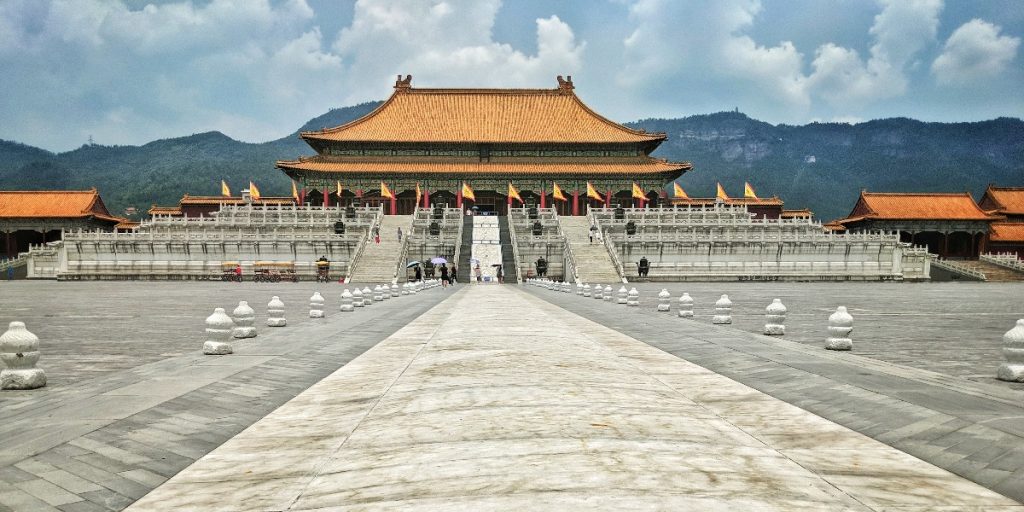
A same scaled model of the Forbidden City in Beijing and built in 1998. 7 Mountains were destroyed to build this place. This also makes it the largest film studio on site, with a total area of 247 acres. You are able to find magnificent palaces, splendid imperial gardens, sublime mansions of royal family, grand government offices and folk houses.
Palace of Emperor Qin
Built in 1997. You shouldn’t confuse Qin with the Qing dynasty. It is from the first time China became an empire with its first emperor. It is modeled after the fabled royal Xianyang Palace, Qin Dynasty (221-207 BC). The city wall has a maximum height of 18 meters and a girth of 2.5 kilometers. More than 500 films have been made here, what makes this palace one of the most popular places to visit for Chinese.
Riverside Scene
This filmset is divided into the outer city and the inner city. It renders a street scene from a historical painting by Zhang Zeduan live. There are over 120 houses, 6 bridges, 9 wharves, 6 boats and 14 archways. One of the prettiest places to visit and when we were there a lot of film shooting was going on here.
Guangzhou Street and Hong Kong Street
Most of the honeymoon shooting is going on here. Guangzhou Street looks exactly like Guangzhou from a photo taken in the 1840s. You will see references to the opium war as well. As mentioned before it would be great to visit this place around 4 pm, so that you can visit Hong Kong Street in the evening time while you are here.
There are more than thirty European style buildings in Hong Kong Street and in the night when the neon lights are turned on. This place looks like magic and you can totally imagine that this was maybe the freest time period in Chinese history.
Ming and Qing Folk Houses
Unfortunately, this was our last visit and we were quite tired by walking that much through all the different time periods. However, this is still a beautiful place. It presents the prosperous scenes of the ancient city, Nanjing. There are more than 200 hundred folk houses of the Ming Dynasty (1368-1644, Qing Dynasty (1644-1911), and the Republic of China. You can freely visit those houses, and some are even decorated.
Chinese Cultural Garden
We haven’t visited this place, so I can’t tell much about it. However, the Three Religions Tower is depository for cultural artefacts reflecting the thoughts of Confucianism, Buddhism and Taoism.
Rocky Grotto
This one was high on my list, but we didn’t visit it. One of the reasons was a lack of time, the second was the fact that it wasn’t included into our 2 day pass. This one is on top of a mountain and brings you back in nature. You will also find some great number of Taoist temples built along the cliffs.
Performances
There are loads of performances going on into the park. For a complete overview please check out this link. Make sure when you enter every place that you grab a free map and that you also take a look at the latest update in term of performances.
Besides the standard big performances, there are also some small performances going on. Such as learn how to write characters from the Qin Dynasty. Everything is in Mandarin but you can easily follow what is going on.
How to get there?
You can reach the place by train or by coach.
From Yiwu
Take a coach to Hengdian from Jiangdon Passenger Station for about 15 RMB. It takes one hour from Yiwu and the coach is going every 30 minutes between 6:00 and 15:50.
From Hangzhou
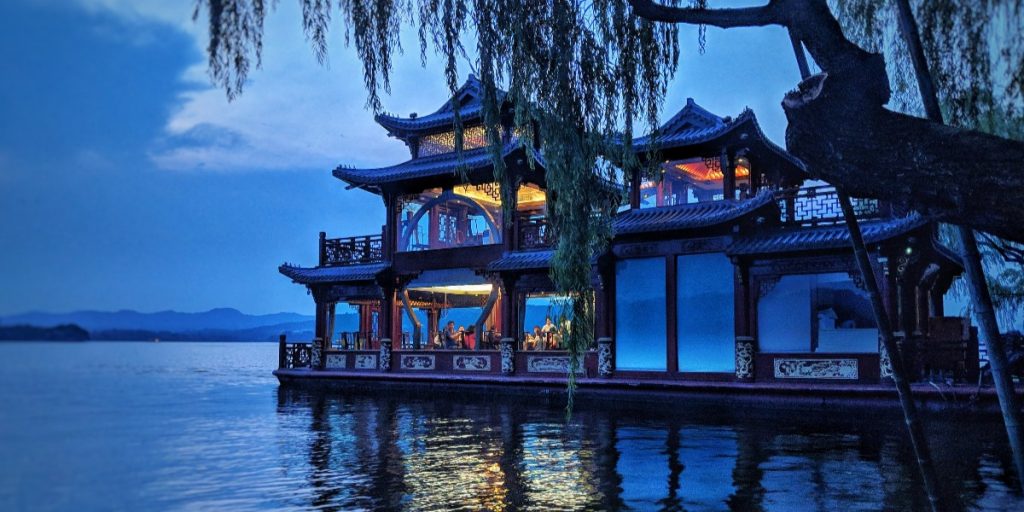
It takes 2.5 hours to travel from Hangzhou to Hengdian. You can take a coach at Hangzhou South Bus Station (64 RMB), Hangzhou Tourist Dispatch Center (60 RMB) or Xiashan Airport (70 RMB). Coach times vary but the earliest coach is going from Hangzhou South Bus Station at 6:50. At the tourist Dispatch Center they start to operate at 8:00 and from Xiaoshan Airport the earliest one is at 10:20.
Another option would be to take a train to Yiwu. There are loads of departures each day and the duration by bullet train is about 40 minutes. This will cost you 84.5 RMB for first class and 50 RMB for second class. Upon arrival, take bus K805 to Jiangdon Passenger Station and then take a coach to Hengdian.
From Shanghai
Take a coach to Dongyang at General Long-distance Bus Station for 104 RMB. It takes around 4 hours and then you have to take a coach to Hengdian for 6 RMB which takes you about 20 minutes. There are 5 coaches going between 7:30 and 16:10.
Another option would be to take a coach at South Passenger Station to Dongyang with 5 coaches departing between 8:15 and 16:53 for 104RMB. Also here you have to change to a coach to Hengdian for 6 RMB.
If you want to go by train, there are 27 bullet trains departing every day from Hongqiao Railway Station each day from 6:30 to 18:33. This will take you about 1.5 – 2 hours for 201.5 RMB for first class and 123 RMB for second class. Upon arrival, take bus K805 to Jiangdon Passenger Station and then take a coach to Hengdian.
How to get around
There are city busses operating between 7:00 and 17:30. Duration between different destinations is around 10/20 minutes and ticket fare is 1 RMB. While they should go frequent, every 10 minutes. In reality this could be much longer.
An alternative would be to take a taxi. For the first 2 km you will pay 8 RMB and for every other km you will an extra 2 RMB. We paid around 17 RMB to go from one place to another. Depending on distance.

